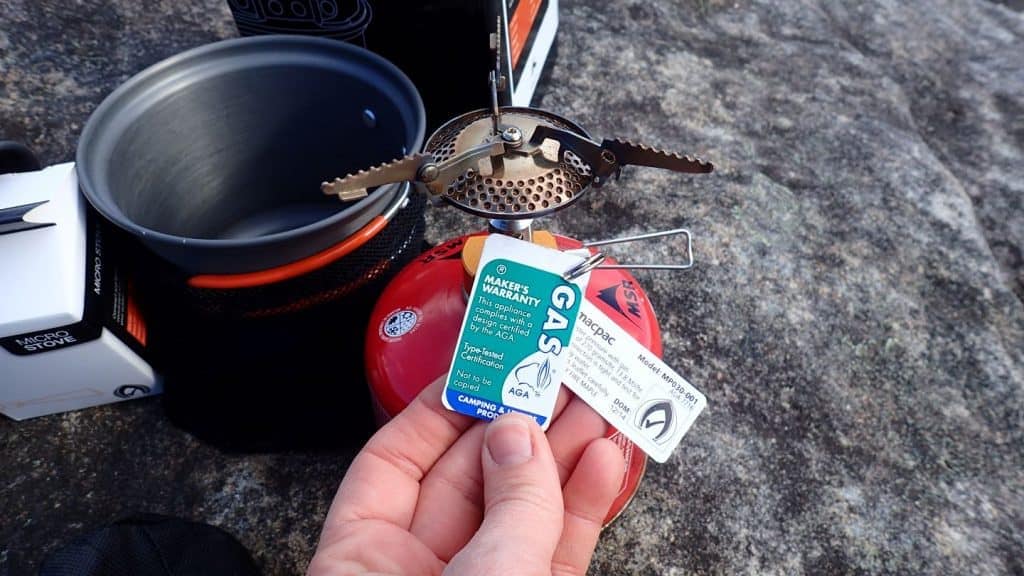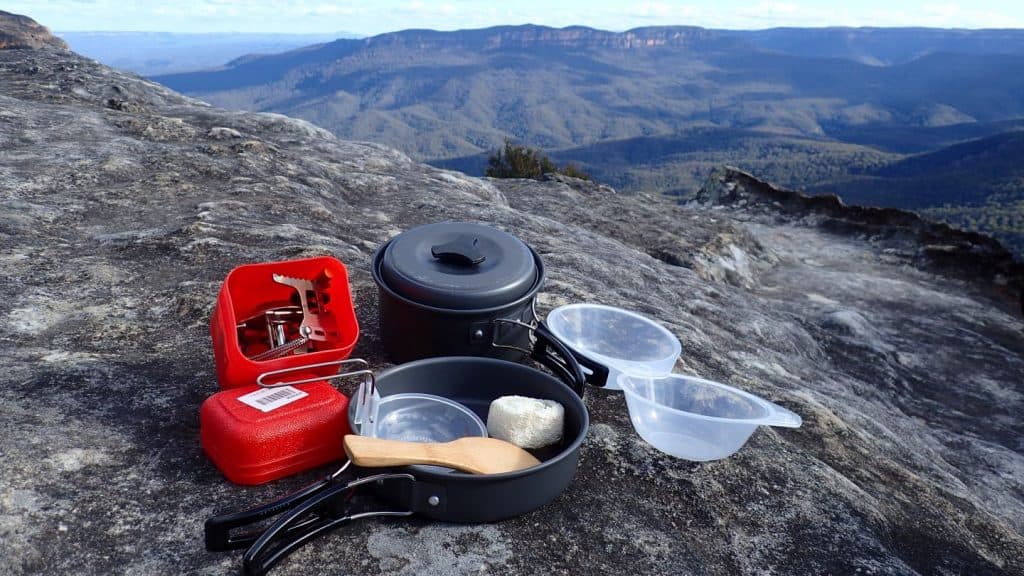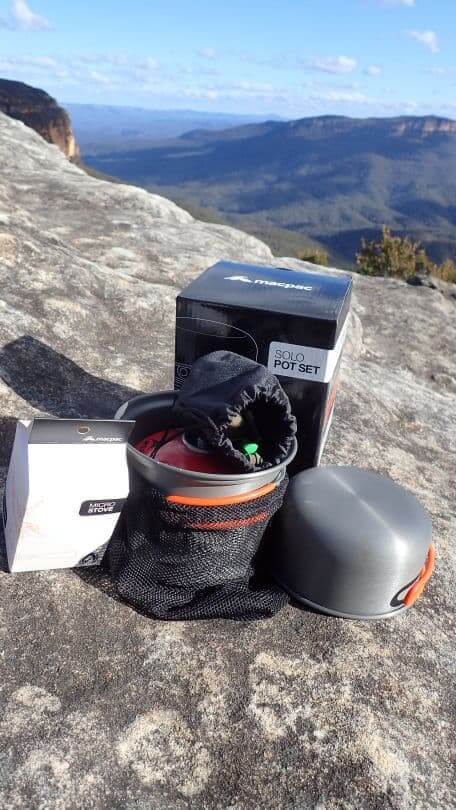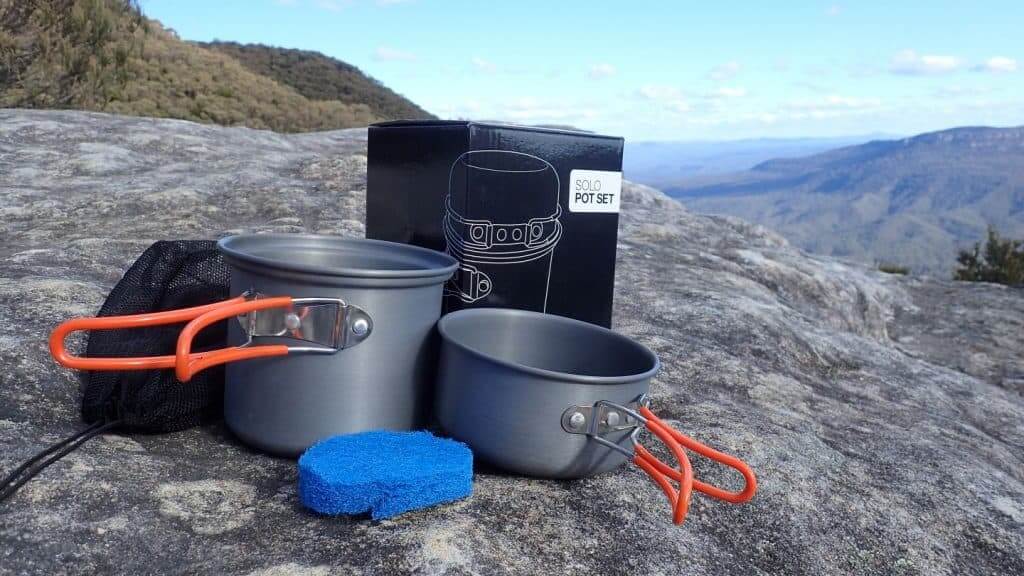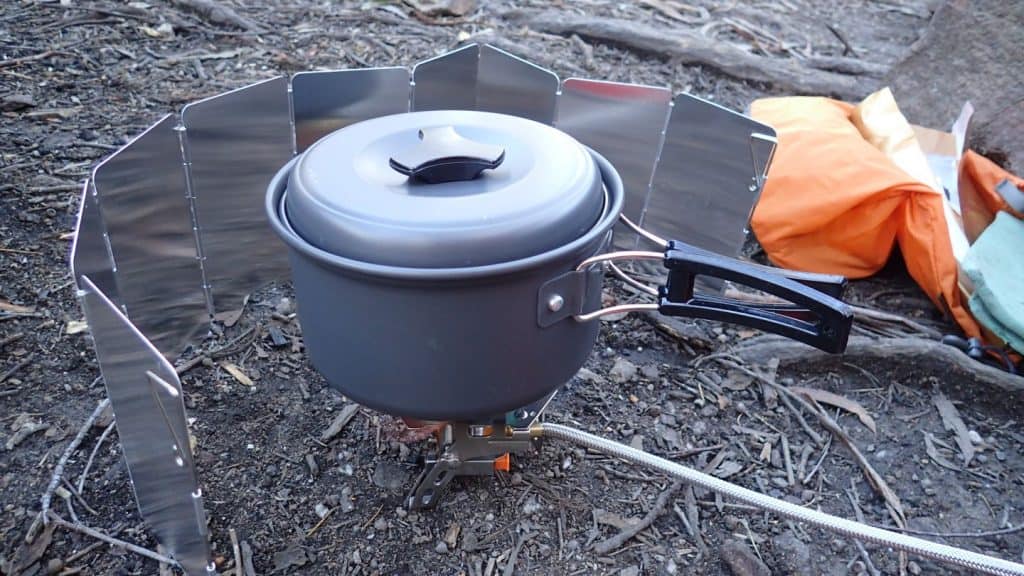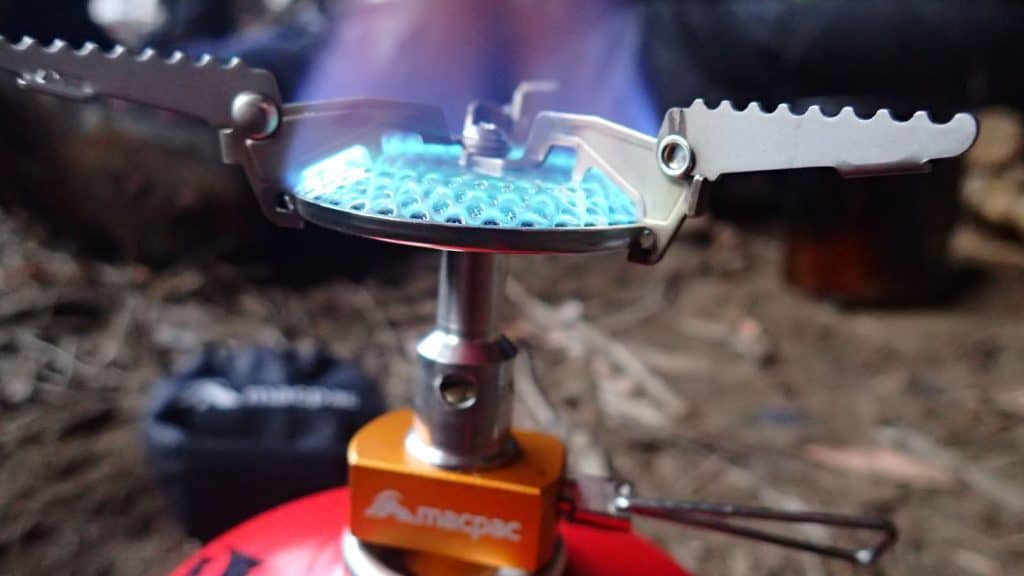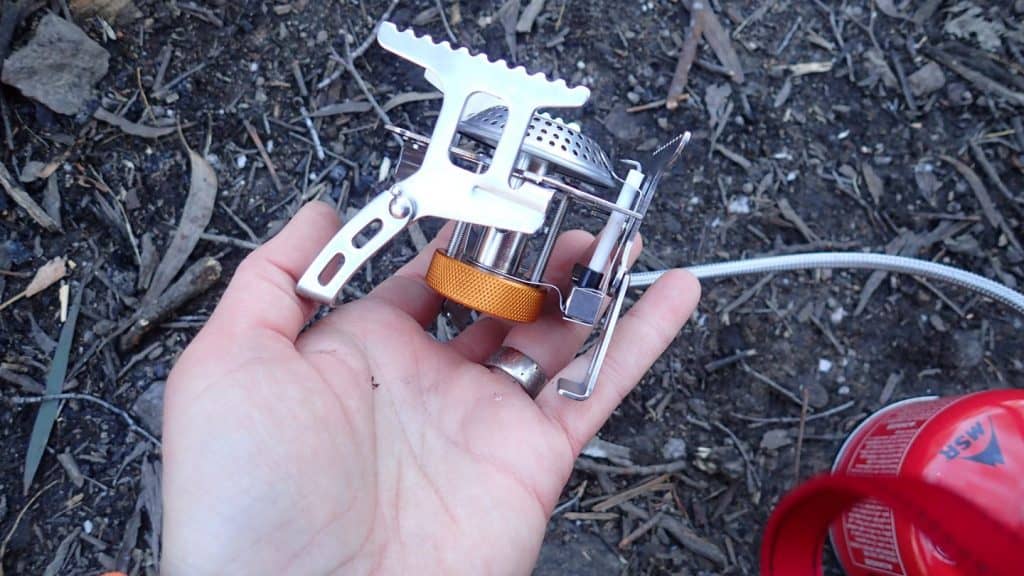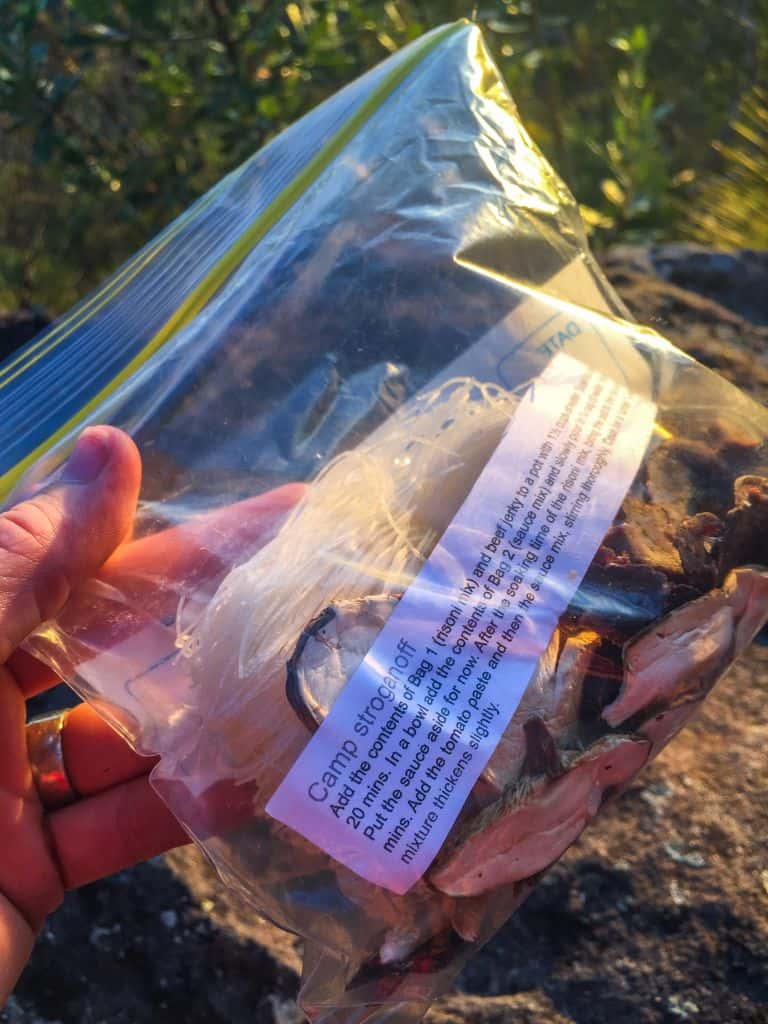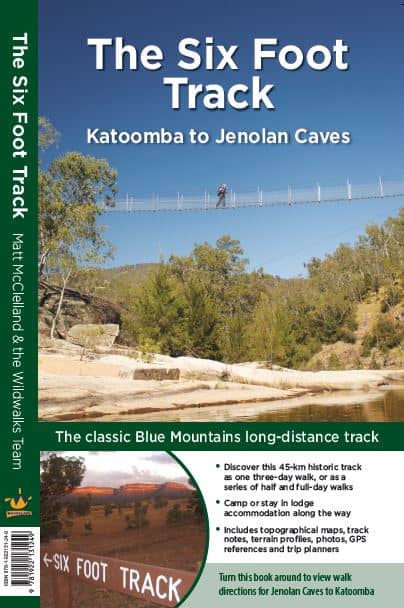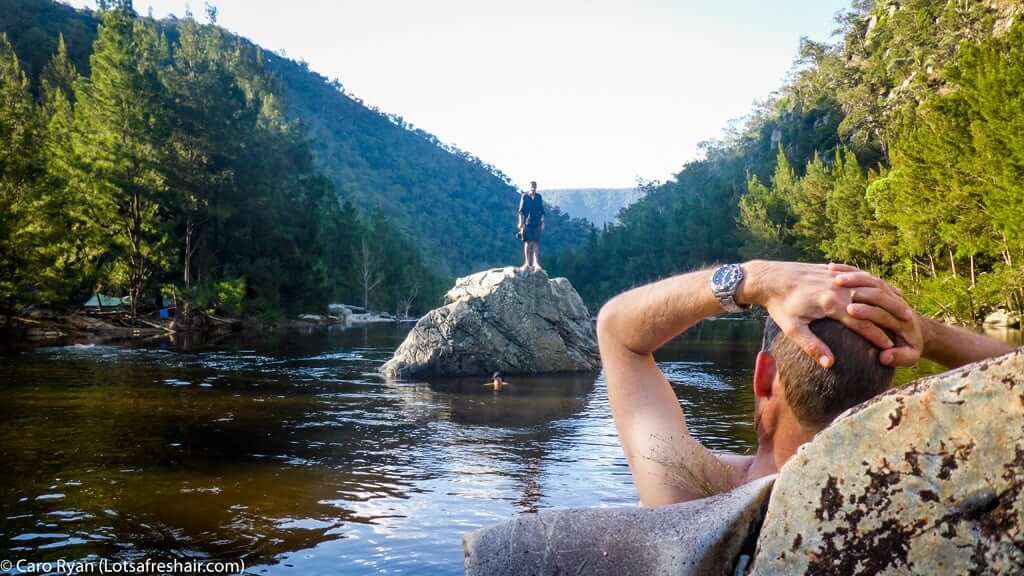One of the best things about hiking is that it costs nothing… sort of. Sure, putting one foot in front of the other on a bush track doesn’t cost a thing, but the shoe and sock on our foot, the pack on our back and all the goodies inside can add up to a pretty penny. And if you’re just starting out and building a kit from scratch, it doesn’t take long to realise that nothing in life is free. Here’s what happened when I set out to compare a cheap hiking stove and pots, with a reputable brand.
I heard a friend recently refer to Kent Street (the street in Sydney which is lined with outdoor gear shops) as, ‘The Candy Store”. Such a great description for the enticing and colourful array of windows, 40% sales and nik-naks to made your next outdoor adventure that little bit better, more comfortable, lighter and generally, more epic. They’re like a magnet to me, I love just browsing, touching and imagining if that widget is going to be a worthy addition to my kit. Oooo look! It’s the bargain bin!!!
We all know that online shopping has dramatically changed the retail landscape in the last 10 years, disrupting the traditional bricks and mortar of the face-to-face shopping experience. In the West, our eyes nearly dropped out of our heads when we discovered sites from China like Alibaba (“Wow! Look… a tent for $3… I’ve only got to buy 2,500 of them!”) and now its sister site AliExpress where you can now buy 1 off. Our insatiable desire for a good deal continued as many, many more sites like this (and drop-shipping/online marketing) started appearing, essentially cutting out the middleman between Chinese manufacturers and ourselves.
Sometimes though, a middle man is handy. They can ensure products comply with local safety standards and offer the ‘comfort’ of knowing there’s someone local who is bound by your country’s consumer rights legislation.
I was recently contacted by one of these sites, Lightake, to see if I’d be interested in doing a free product review in exchange for some product. Now, I don’t usually do free reviews, but as I’ve been curious about buying outdoor gear from China for a while, I thought this was the perfect opportunity to test cheap hiking stoves and pots against Australian conditions.
The product I’m looking at is a full kitchen set, which includes a gas burner stove with a cooking pot and accessories set. Essentially, they’re offering a full cooking set (pot, pan, cups, stove and windshield) for $31.83 AUD + $15.65 shipping. Sounds like a bargain and a good way to kick-start your hiking kit, so I was keen to check it out.
As a comparison, I’m going to be looking at similar products available from recognised outdoor brand Macpac who have both bricks and mortar shops in Australia and New Zealand, as well as an online store.
Cooking Pot Sets
Macpac Solo Pot Set – $39.95 AUD + shipping
- Weight (2 pots) = 220g
- Includes: 2 pots, mesh bag, non-scratch scourer
- Lid can double as tiny fry pan or cup (I used it as my cup)
- Fits 375g gas canister snugly inside + Macpac Micro Stove + lighter
What I like:
The overall quality and feel of the product is good and being able to stow both a gas canister and a mini-stove inside is a great way of saving space in my backpack. I like that this is a snug fit, which means that there’s not a rattle coming from inside my pack on the track all day. After a solid weekends adventure, there were no signs of wear or scratches on the pots. I was able to leave my cup at home as I used the smaller pot/lid for my cup. The mesh bag is a nice touch and the rounded edge design and ability to use the smaller pot as a lid is pleasing.
What I didn’t like:
Although I like the rubberised handles, it means that they will melt if I use the pots to cook on a campfire. Therefore, these really are pots to be used with a stove only.
Lightake Cookware Set – $13.27 AUD + shipping
- Weight (1 pot + 1 frying pan) = 267g (327g with lid)
- Includes: 1 pot, 1 frying pan, lid, wooden spatula, 2 plastic cups, 1 plastic ladle, pot scrubber… what, no steak knives?
- Fits 375g gas canister loosely inside plus accessories
- Comes with mesh bag
What I liked:
Opening the kit from the box felt like Christmas. There’s a lot of accessories included inside the kit, some of which I think are made for the asian market, with a random soup ladle as one example. The price is the most appealing thing with this product. I doubt you could do better elsewhere. Gas canister fits inside (loosely), but not with other accessories. Also comes with a sturdy mesh, draw-string bag.
What I didn’t like:
The feel and overall quality isn’t very high in this product, with several scratches noticed after a solid weekend’s adventure. The handles feel quite loose and the biggest design flaw seems to be that the frying pan doesn’t double as a lid for the saucepan and that the lid doesn’t fit the frying pan. As with the Macpac one, this is a stove cooking kit only, as the handles would melt if used to cook over a campfire. Apart from the lid on the saucepan, nothing felt like it fitted together very well. If they’d made the wooden spatula handle shorter, it would fit inside the pot better with the other accessories.
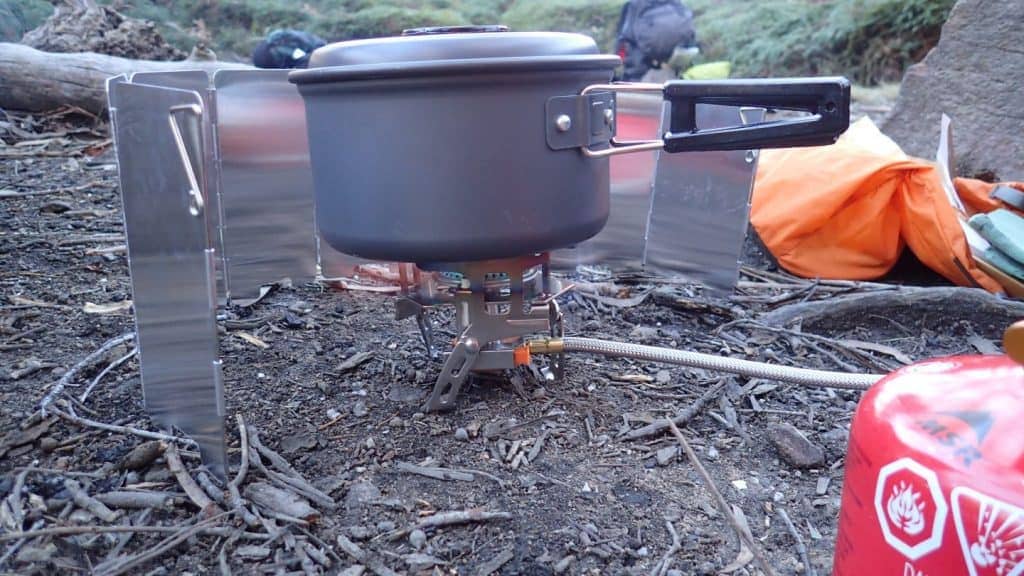
Gas Stoves
Macpac Micro Stove – $59.95 AUD + shipping
- Weight = 67g
- Includes: Draw String bag
- Certified by Australian Gas Association
What I liked:
I was looking for a replacement for my old MSR Pocket Rocket and this seems to fit the bill for a lightweight, compact stove, whilst offering better stability than other micro-stoves on the market. I like the squat design, which offers a low profile, assisting the stability. I like the weight of this at just 67g (Pocket Rocket 85g) and the drawstring bag also fits a small cigarette lighter. Comes with an Australian Gas Association Maker’s Warranty as a certified product.
What I didn’t like:
If I could wave my magic wand, I’d like a small lightweight stove like this to also have a piezo ignition. The arms that fold out feel quite loose, would be nicer if they had a more solid feel as they can be knocked closed if not careful with pot placement.
Lightake Split Style Gas Stove – $31.83 (including full kitchen kit)
- Weight = 232g (stove only)
- Includes: Piezo-electric ignition (push button lighting), plastic storage container, windshield
What I liked:
This feels like a really solid piece of kit. Its size and weight contribute to this feeling. I really like the piezo ignition, it lit 1st or 2nd go each time. Having the gas canister connected by a hose is a design that works well with a windshield as it doesn’t wrap around the canister, potentially dangerous to overheating the canister. Again, the price is an absolute cracker with this one.
What I didn’t like:
Almost a deal breaker (but not) was that the one I got sent seemed to have a design fault that one leg couldn’t be extended properly without pushing a bend into the gas hose. The weight and bulk of this is just too much for me when there are lighter/smaller choices available. The gas burner seemed to really churn through (burn) gas quite quickly. Although I can’t give you an accurate measure, I got the distinct impression that I used almost half again as much fuel as I normally would have on my old Pocket Rocket. Not sure how I feel about using a gas product without a location certification.
Conclusions
- Macpac Kit = AUD$99.90 + Shipping (Free shipping over $100)
- Lightake Kit = AUD$31.83 + Shipping ($15-ish)
It’s important to note that this comparison isn’t exactly an ‘apples for apples’ type test. Both products are a bit different, each appealing to a slightly different demographic. Most notably, the Macpac gear leans strongly towards the weight-conscious hiker, whereas the Lightake products may be more suitable for the mid-range hiker or light car camping.
If you look at the two different offerings, the old adage of, ‘you only get what you pay for’, rings quite true in this case. The irony of hiking and outdoor gear is that the lighter things are, the more they cost. Lightweight is desirable when you need to carry things on your back and the techniques, processes and materials that go into making gear lighter weight cost more.
Bearing all this in mind then, along with the pros and cons that I mentioned above, the decision needs to be made based on what criteria is most important to you. Is it:
- Weight
- Cost
- Quality and Design
and are you willing to compromise on any of those needs?
Q: Have you bought anything direct from Chinese manufacturers or their online stores? What was your experience like? Would you recommend it?
Further Reading:
- Checkout my food archives for ideas of easy and tasty hiking food
- What’s in my kit for an overnight hike (weekend packing guide)
- Lightweight Hiking Cookbook “Xtreme Gourmet” (delicious recipes!) by Sonya Muhlsimmer
- Feed The Hike by Michelle Ryan (including dehydrating!)


